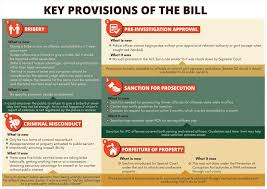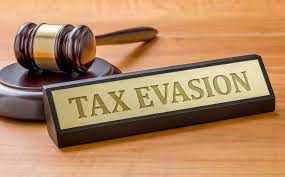Capital Gain on depreciable assets held for more than three years should be treated as long term capital gain for determining the rate of tax
 Recently in the case of M/s. Smita Conductors Ltd. vs. the Deputy Commissioner of Income Tax, ITA No. 4004/Mum/2011 by a judgment it has been held that for applicability of rate of tax an asset should be treated as long term capital gain if the same is held for more than three years though for computation of capital gain it may be treated as short term capital gain under section 50 of the Income Tax Act.
Recently in the case of M/s. Smita Conductors Ltd. vs. the Deputy Commissioner of Income Tax, ITA No. 4004/Mum/2011 by a judgment it has been held that for applicability of rate of tax an asset should be treated as long term capital gain if the same is held for more than three years though for computation of capital gain it may be treated as short term capital gain under section 50 of the Income Tax Act.
Provisions contained in Section 50 of the Act:
Section 50 of the Income Tax Act deals with the provisions for computation of capital gains in case of depreciable assets. It provides that where the capital asset becomes a part of a block of assets for which depreciation is allowed under the Act, the provisions of sections 48 and 49 of the Act shall be subject to the following:
Where the total consideration received due to the transfer of the asset along with the total value of such consideration received towards the transfer of any other capital asset during the previous year, is more than the sum of the following amounts, namely:
(i) Expenses incurred in connection with such transfer(s);
(ii) The declared value of the assets at the beginning of the previous year ; and
(iii) The actual cost of any asset acquired during the previous year.
The excess amount shall be considered to be the capital gains derived out of the transfer of short-term capital assets.
Moreover where any block of assets do not exist due to the reason that all the assets in that block have been already transferred during the previous year, the cost of acquiring the said assets shall be the written down value of the block of assets at the beginning of the previous year, and the income gained for such transfer(s) shall be treated as the capital gains arising from the transfer of short-term capital assets.
Facts of the case:
The assessee, M/s. Smita Conductors Ltd. sold a flat at the consideration of Rs. 35 lakhs. The flat was a business asset and the same was declared as a part of the block of assets by the assessee. The assessee computed capital gains as per the provisions of section 50 of the Act at Rs. 12.52 lakhs after deducting written down value of the block of assets from its sale price. The AO asked the assessee to show cause as to why the stamp value should not be substituted for his declared consideration while computing the capital gain as per 50C of the Act. The assessee stated that section 50C was not applicable in his case. The AO did not accept the contentions. The AO held that as the sale price of the flat as it appeared from the stamp value of the registered deed of conveyance was Rs. 59 lakhs, section 50C was applicable to it and the given value should be replaced by the consideration received. The CIT (A) rejected the arguments on behalf of the assessee and confirmed the view of the AO.
The assessee preferred an appeal being aggrieved by the order passed by the CIT (A) where the assessee raised disputes on two grounds in connection with addition to capital gain under section 50C of the Act and addition due to bad debt.
Provisions contained in Section 50C of the Act:
Section 50C of the Income Tax Act, 1961 deals with the gross consideration in computing the capital gains for the property transactions.
Section 50C provides that in case the value stated in the deed of transfer is less than the valuation as assessed by the registration authorities, the valuation assessed by the authorities will be considered for computation of capital gains due to transfer of any property.
Illustration: If in the agreement for sale, the set forth value of an asset is Rs. 20 lacs but according to the registration authorities, the valuation comes to Rs.30 lacs, then it will be considered that the property has been sold for Rs. 30 lacs, as such the capital gains will be computed accordingly. In some cases, it is very difficult for the vendor of the property as he has to pay tax on the extra money which he did not receive. Moreover to claim exemption by investing in a residential property, he has to invest the so called extra amount which he did not receive.
The decision:
The dispute was whether the provisions of section 50C were applicable to computation of capital gain in case of depreciable asset under section 50 of the Act. The additional ground raised by the assessee in connection with addition to capital gain under section 50C of the Act being a legal ground and not based on facts was admitted by the Tribunal.
The order of the CIT (A) was set aside and the claim of the assessee was allowed. The AO was directed to compute the capital gain from the sale of flat and apply the rate of tax after verifying the same as per the Hon’ble Court’s order.
It supported the argument submitted by the Learned Counsel of the assessee that the flat sold was held by the assessee for quite a long time that was more than three years, as such, the capital gain should be treated as long term capital gain according to the judgment of the Hon’ble Mumbai High Court in Ace Builders Ltd. (281 ITR 410) wherein it was held that the fact of considering it as short term capital gain under section 50 of the Act was applicable only to calculation of capital gain and for the other purposes, it would gain the character of long term capital gain if it has been held for more than three years.


 ITAT Amritsar: No Section 269SS Violation for One-Time Cash Payment Before Sub-Registrar
ITAT Amritsar: No Section 269SS Violation for One-Time Cash Payment Before Sub-Registrar  Tax Officials Unleash Digital Dragnet: How New Raid Powers Redefine Privacy, Property Rights in India and likely to Fuel Corruption
Tax Officials Unleash Digital Dragnet: How New Raid Powers Redefine Privacy, Property Rights in India and likely to Fuel Corruption  Income Tax Department Rewards for Reporting Tax Evasion: A Comprehensive Guide
Income Tax Department Rewards for Reporting Tax Evasion: A Comprehensive Guide  Forfeiture of Gratuity by Employer- What are the Remedies for an employee- Can employer be challenged?
Forfeiture of Gratuity by Employer- What are the Remedies for an employee- Can employer be challenged?  Employer can forfeit gratuity of an employee in case of moral turpitude
Employer can forfeit gratuity of an employee in case of moral turpitude  Diving Deeper: The Impact of the New Tax Bill on Dairy and Farming Income
Diving Deeper: The Impact of the New Tax Bill on Dairy and Farming Income